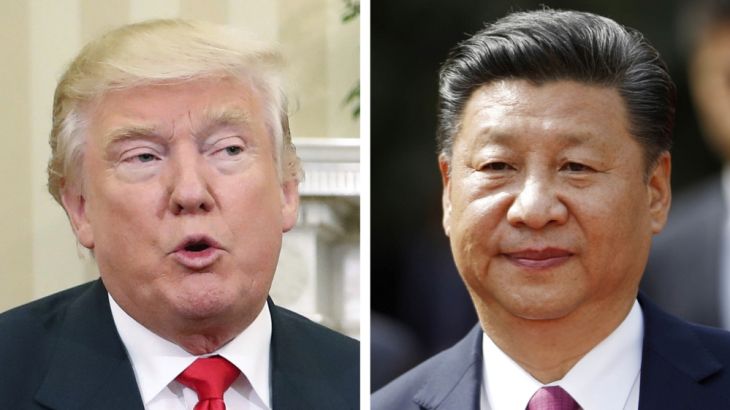
Economic outlook: Business stories to watch in 2017
US-China relations ended 2016 under a dark cloud, so will these two economic titans go on a collision course in 2017?
How the United States and China, the world’s two biggest economies, deal with each other will likely be a big theme in 2017.
The US-China relationship ended 2016 under a dark cloud as US president-elect Donald Trump promised to play tougher with China. He’s vowed to slap tariffs on Chinese goods and questioned his country’s long-standing policy on Taiwan, which China considers its own. So, will these two economic titans go on a collision course in 2017?
Keep reading
list of 4 itemsRussia’s Putin eyes greater support from China for Ukraine war effort
India-Iran port deal: A gateway to Central Asia or a geostrategic headache?
India’s income inequality widens, should wealth be redistributed?
China’s leader, Xi Jinping, will be in the spotlight too, in 2017, over how he manages a slowing economy weighed down by corporate debt and excess industrial capacity.
Karel Lannoo, CEO of the Centre for European Policy Studies (CEPS), discusses the main stresses that China, under Xi Jinping, will face in 2017, both domestically and overseas.
“I think economic growth will be slowing down a bit, but compared to Europe, it [China] will continue to have a very high economic growth – around 6 percent … We’ve seen this slowing down since several years … The main problems I see in China are steady depreciation of the renminbi (RMB) and the probable problems of over-indebtedness in the financial system, and within the households, and how this may unfold. Also, the declining reserves … and, of course, the effect of the Trump investment plan on Asia. Who will be buying US treasury bills, if we see the Chinese economic growth is coming down and their dependence on foreign imports is increasing,” says Lannoo.
It is unclear whether Trump will unwind certain trade deals, notes Lannoo as “it’s very difficult to read his intentions because he’s often doing entirely the opposite of what he’s saying”.
China also surprised the world when it released a new study just as 2016 drew to a close, outlining the government’s ambitious plans to make the country a space power. Rob McBride reports from Beijing.
Also on this episode of Counting the Cost:
The OPEC oil deal and its impact on the Gulf region: A global production deal between the Organisation of Petroleum Exporting Countries (OPEC) and non-OPEC producers kicks in on New Year’s Day. It’s the first such deal in 15 years and the hope is it will bolster oil prices in the year ahead. The pact will cut crude oil production across the globe by almost 1.8 million barrels a day.
Saudi Arabia is making most of those cuts and it stands ready to cut more if required. As the Arab world’s biggest economy and biggest oil producer, Saudi Arabia’s economy needs the oil price at around $50 a barrel, according to plans outlined in its latest budget. The kingdom is also looking to tax expat workers and their dependents in the new year, as part of a long-term plan to transform its economy known as “Saudi vision 2030”.
Nassib Ghobril, chief economist at the Lebanese Byblos Bank Group, provides an outlook for Saudi Arabia’s economy and the Gulf region in 2017.
The future of televised sports: It may come as a surprise to many, but television audiences are down in the two biggest sports leagues in the world. Early season ratings for live Premier League matches on Sky Sports are down by a fifth compared to last year. That’s bad news for UK broadcasters, who shelled out a record $6bn in a three-year-rights deal that started in 2016. It’s a similar story in the US, where American football’s NFL has seen its viewership fall 12 percent in the first seven weeks of the season. Is football becoming a TV turn-off for viewers? And what does it mean for the future of televised sport? Gary Hudson, a senior lecturer at Staffordshire University, talks to Counting the Cost.
Emoji love: There are now almost 2,000 standardised little pictures in our phones to express almost any emotion or activity and anything in between. Emojis have become such a big part of the way many of us communicate, it was only a matter of time before someone created a museum exhibit in their honour. Kristen Saloomey reports from New York on why the little smartphone characters are so popular.